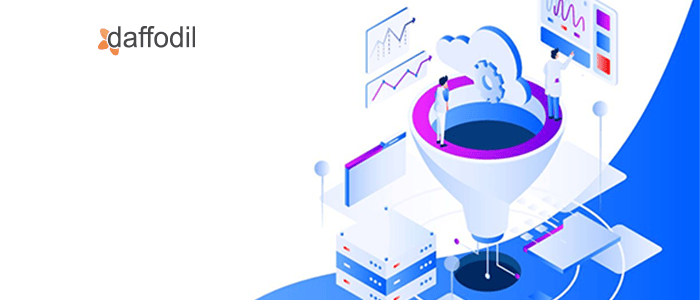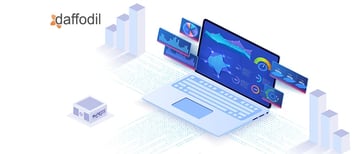 Nowadays, businesses can produce data analytics based on big data from numerous sources. Once they acquire access to all of the requisite data sources for analytics and business intelligence in order to make better decisions. The transfer of this data is facilitated in a streamlined manner by different data ingestion strategies.
Nowadays, businesses can produce data analytics based on big data from numerous sources. Once they acquire access to all of the requisite data sources for analytics and business intelligence in order to make better decisions. The transfer of this data is facilitated in a streamlined manner by different data ingestion strategies.
Only consistent and uninterrupted data access can ensure that your business maintains good reporting and analytics. So data fed into the analytics or BI model must be transported in a systematic manner consumable by all concerned stakeholders.
In this article, we will take an in-depth look at what data ingestion really is and why businesses rely on the degree of its efficiency. We begin by defining what data ingestion is and where it lies in the data analytics or enrichment paradigm.
What Is Data Ingestion?
The transmission of data from a wide array of sources to a storage medium for later use in data analytics and reporting by an enterprise is known as data ingestion. In the data handling lifecycle, data ingestion occurs in one of the earliest stages by means of ingestion tools for the collection, import, and processing of data.
Sources of the said data could vary from in-house software, SaaS data, apps, databases, webpages, and static sources such as spreadsheets. The analytics framework of any organization relies on a robust data ingestion strategy. Based on the various architectures and data models of the enterprise analytics workflow, the design of the particular data ingestion layer may vary.
A data ingestion pipeline typically consists of a channel of data streaming from an existing data store or warehouse to a larger agglomeration of data such as that of a data lake. The structure of the enterprise's data decides the way the data ingestion pipeline is configured.
Customer Success Story: Customer Success Story: Daffodil helps reduce data redundancy by 30% for a maritime logistics provider.
What Is The Importance Of Data Ingestion?
Any analytics architecture's core is its data ingestion layer. Systems for downstream reporting and analytics depend on reliable and easily accessible data. Data can be ingested in a variety of ways, and the design of a given data ingestion layer might be based on a number of distinct models or architectures.
Here are some of the benefits of data ingestion:
- Tools for data ingestion can process a wide variety of data formats as well as a sizable volume of unstructured data.
- Data ingestion restructures company data to predetermined formats and makes it easier to utilize, particularly when combined with extract, transform, and load (ETL) operations.
- Businesses can utilize analytical tools to get useful BI insights from a number of data source systems once data has been ingested.
- Businesses may enhance applications and offer a better user experience thanks to insights gained from evaluating ingested data.
- Businesses can give data and data analytics to authorized users more quickly with the aid of efficient data input. Additionally, it makes data accessible to programs that need current data.
Types Of Data Ingestion
A specific project's data ingestion layer is structured according to the business restrictions and requirements. An effective data strategy is supported by the right ingestion model, and organizations often select the model that is suitable for each data source by taking into account how quickly they will want analytical access to the data.
Depending on the above factors, the data ingestion process can take any of the following three forms:
1)Real-Time Ingestion
Real-time ingestion makes it possible to continuously transport structured, semi-structured, and unstructured data from a variety of sources to cloud and on-premises endpoints in real-time, making it accessible to users and applications right now.
Data is sent to targets including big data, the cloud, transactional databases, files, and messaging systems from data sources like databases, log files, sensors, and message queues. Real-time ingestion reads new database transactions from source databases' transactions or redoes logs and transports only the updated data without affecting the database workload using non-intrusive Change Data Capture (CDC).
2)Batch-Based Data Ingestion
Batch data ingestion, the most used model, gathers data in sizable jobs, or batches, for periodic transfer. The task can be scheduled to run based on logical ordering or straightforward scheduling by data teams. When a company has a large dataset that doesn't need near-real-time analysis, it often uses batch ingestion.
For instance, a company doesn't necessarily need to access and analyze data as soon as a support ticket is resolved if it wants to investigate the relationship between SaaS subscription renewals and customer support tickets. Instead, the company could ingest the relevant data on a daily basis.
3)Micro Batching Ingestion
In contrast to conventional batch processing, micro-batch processing processes data more frequently, resulting in the processing of smaller groups of fresh data. Workloads were primarily batch-oriented in the old data environment. We could gather data in groups, clean and transform it, and then load it into a data warehouse to feed prepared reports on a daily, weekly, monthly, quarterly, and annual basis.
When most businesses dealt with clients primarily in the physical world, this cycle was adequate. In that data are often processed as a group, micro-batch processing is very similar to standard batch processing.
The main distinction is that smaller batches are processed more frequently. Data processing in a micro-batch may be based on frequency; for instance, you might load all fresh data every two minutes (or two seconds, depending on the processing horsepower available).
ALSO READ: Why Data Engineering And AI Are Mutually Beneficial
Data Ingestion Needs A Key Differentiator In Data Enrichment
Data ingestion is a crucial piece of technology that enables businesses to harvest and send data automatically. After establishing data intake pipelines, IT and other business teams may concentrate on gaining value from data and uncovering fresh insights.
Additionally, in today's fiercely competitive markets, automated data input could become a critical differentiation. A key differentiator in data enrichment must be paired with a key differentiator in delivering seamless data ingestion. Daffodil's Data Enrichment Services is a highly effective alternative to ensure the quality of data ingestion.



